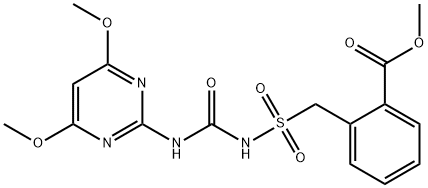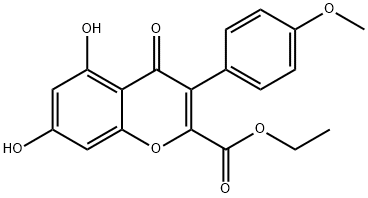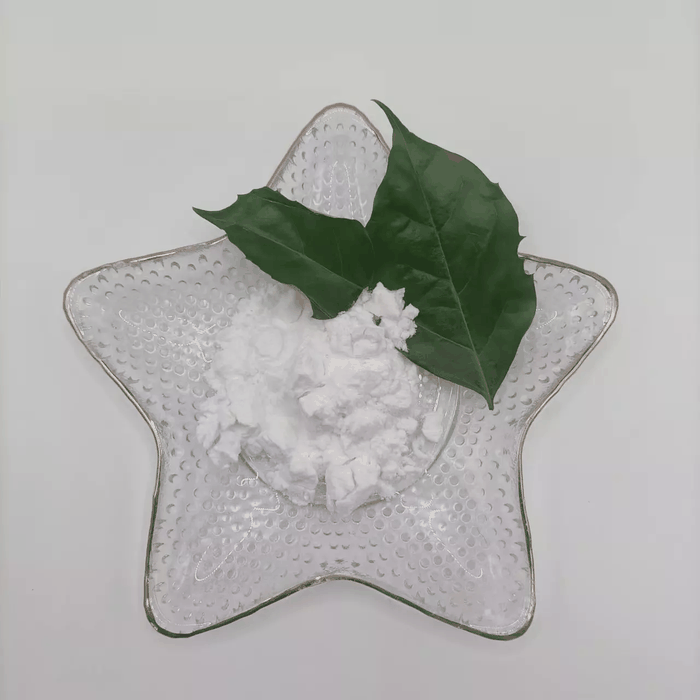Formononetin
Synonym(s):Formonetin;Formononetol;7-Hydroxy-3-(4?-methoxyphenyl)-4H-benzopyran-4-one;7-Hydroxy-3-(4-methoxyphenyl)-4H-1-benzopyran-4-one;7-Hydroxy-3-(4-methoxyphenyl)chromone
- CAS NO.:485-72-3
- Empirical Formula: C16H12O4
- Molecular Weight: 268.26
- MDL number: MFCD00016948
- EINECS: 207-623-9
- SAFETY DATA SHEET (SDS)
- Update Date: 2024-11-20 15:18:15

What is Formononetin?
Description
Formononetin (485-72-3) is a naturally occurring isoflavone isolated from Astragalus and other plants. Increases adipocyte thermogenesis by modulating PPARγ activity.1?Activates AMP-activated protein kinase/β-catenin signaling to inhibit adipogenesis.2?Accelerates wound repair by increasing expression of Egr-1 transcription factor.3?Potential cancer chemopreventive and chemotherapeutic.4?Provides neuroprotection against traumatic brain injury by inhibition of neuroinflammation in a rat model.5
Chemical properties
off-white powder
The Uses of Formononetin
Formononetin is an isoflavone found as one of the main plant estrogens in animal feed. When metabolized in the rumen this compound transforms into a potent estrogen.
The Uses of Formononetin
An isoflavone found in a variety of plants. When metabolized in the rumen this compound transforms into a potent estrogen.
The Uses of Formononetin
Formononetin is an isoflavonoid phytoestrogenic compound found in soy-based foods and is the precursor of daidzein . It acts as an agonist of the aryl hydrocarbon receptor with an EC50 value of 0.13 μM. Formononetin has been reported to possess antitumor and antiviral activity.
What are the applications of Application
Formononetin is A phytoestrogenic isoflavone found in soy
Definition
ChEBI: Formononetin is a member of the class of 7-hydroxyisoflavones that is 7-hydroxyisoflavone substituted by a methoxy group at position 4'. It has a role as a phytoestrogen and a plant metabolite. It is a member of 7-hydroxyisoflavones and a member of 4'-methoxyisoflavones. It is functionally related to a daidzein. It is a conjugate acid of a formononetin(1-).
General Description
Formononetin belongs to the isoflavones class of polyphenols.
Flammability and Explosibility
Not classified
Biochem/physiol Actions
Isoflavone found in red clover. Effective against Giardia lamblia infection, at least partially by inducing detachment of trophozoites from intestinal mucosa.
References
1) Nie?et al.?(2018),?The natural compound, formononetin, extracted from Astragalus membranaceus increases adipocyte thermogenesis by modulating PPARγ activity; Br. J. Pharmacol.,?175?1439 2) Gautam?et al.?(2017),?Formononetin, an isoflavone, activates AMO-activated protein kinase/?β-catenin signaling to inhibit adipogenesis and rescues C57BL/6 mice from high-fat diet-induced obesity and bone loss; Br. J. Nutrit.,?117?645 3) Huh?et al. (2011),?Formononetin accelerates wound repair by the regulation of early growth response factor-1 transcription factor through the phosphorylation of the ERK and p38 MAPK pathways; Int. Immunopharmacol.,?11?46 4) Ong?et al.?(2019),?Focus on Formononetin: Anticancer Potential and Molecular Targets; Cancers (Basel),?11?E611 5) Li?et al.?(2018),?Neuroprotective effect of formononetin against TBI in rats via suppressing inflammatory reaction in cortical neurons; Biomed. Pharmacother.,?106?349
Properties of Formononetin
| Melting point: | 256-260 °C |
| Boiling point: | 331.43°C (rough estimate) |
| Density | 1.1529 (rough estimate) |
| vapor pressure | 0Pa at 25℃ |
| refractive index | 1.4350 (estimate) |
| storage temp. | 2-8°C |
| solubility | Soluble in DMSO (up to 100 mg/ml). |
| form | Powder |
| pka | 6.99±0.20(Predicted) |
| color | White to light beige |
| λmax | 300nm(EtOH)(lit.) |
| Merck | 14,4244 |
| BRN | 237979 |
| Stability: | Stable for 2 years from date of purchase as supplied. Solutions in DMSO may be stored at -20° for up to 1 month. |
| CAS DataBase Reference | 485-72-3(CAS DataBase Reference) |
| EPA Substance Registry System | 4H-1-Benzopyran-4-one, 7-hydroxy-3-(4-methoxyphenyl)- (485-72-3) |
Safety information for Formononetin
| Signal word | Warning |
| Pictogram(s) |
 Exclamation Mark Irritant GHS07 |
| GHS Hazard Statements |
H315:Skin corrosion/irritation H319:Serious eye damage/eye irritation |
| Precautionary Statement Codes |
P264:Wash hands thoroughly after handling. P264:Wash skin thouroughly after handling. P280:Wear protective gloves/protective clothing/eye protection/face protection. |
Computed Descriptors for Formononetin
| InChIKey | HKQYGTCOTHHOMP-UHFFFAOYSA-N |
Abamectin manufacturer
CHROMOSYNTH PVT LTD
New Products
4-Fluorophenylacetic acid (S)-3-Aminobutanenitrile hydrochloride 4-Methylphenylacetic acid 5-Aminoimidazole-4-Carbonitrile 4-chloro-3,5-dinitropyridine 2'-Methoxy-biphenyl-2-carboxaldehyde 2-(2-Aminoethyl)isothiourea dihydrobromide, 1-(4-chlorophenyl)propan-1-one 2-Ethyl-4-methyl-1-pentanol DIISOPROPYL MALONATE PENTAFLUOROPHENOL 2-Aminonicotinic acid 6-(4-AMINOPHENYL)-5-METHYL-4,5-DIHYDRO-3(2 H)-PYRDAZINONE β-BUTYROLACTONE 3-OXO-CYCLOBUTANECARBOXYLIC ACID 3-methyl xanthine 1H-Pyrazole-3-carboxylic acid [1,1'-Biphenyl]-4-carboxylic acid (3aR,4R,5R,6aS)-hexahydro-2-oxo-4-[(1E)-3-oxo-4-[3- (trifluoromethyl)phenoxy]-1-buten-1-yl]-2H-cyclopenta[b]furan-5-yl ester 2H-Cyclopenta[b]furan-2,5-diol, hexahydro-4-[(1E,3R)-3-hydroxy-4-[3-(trifluoromethyl)phenoxy]-1- buten-1-yl]-, (3aR,4R,5R,6aS)- 2,5-Dibromopyridine Dimethyl (2-oxo-4-phenylbutyl)phosphonate S-(2-Chloro-3-nitrophenyl) O-ethyl carbonodithioate 1-Methyl-6-oxo-1,6-dihydropyridazine-3-carboxylic acid 2,4-Dichloro-1-[2-nitro-4-(trifluoromethyl)phenoxy]benzeneRelated products of tetrahydrofuran








You may like
-
 Formononetin CAS 485-72-3View Details
Formononetin CAS 485-72-3View Details
485-72-3 -
 Formononetin >98% (HPLC) CAS 485-72-3View Details
Formononetin >98% (HPLC) CAS 485-72-3View Details
485-72-3 -
 Formononetin 95% CAS 485-72-3View Details
Formononetin 95% CAS 485-72-3View Details
485-72-3 -
 Formononetin 95.00% CAS 485-72-3View Details
Formononetin 95.00% CAS 485-72-3View Details
485-72-3 -
 Formononetin 98% (HPLC) CAS 485-72-3View Details
Formononetin 98% (HPLC) CAS 485-72-3View Details
485-72-3 -
 Formononetin CAS 485-72-3View Details
Formononetin CAS 485-72-3View Details
485-72-3 -
 485-72-3 7- Hydroxy -4'- methoxyIsoflavone (or ) Formonetin 98%View Details
485-72-3 7- Hydroxy -4'- methoxyIsoflavone (or ) Formonetin 98%View Details
485-72-3 -
 (3R,4R)-1-benzyl-N,4- dimethylpiperidin-3-amine 477600-70-7 99%View Details
(3R,4R)-1-benzyl-N,4- dimethylpiperidin-3-amine 477600-70-7 99%View Details
477600-70-7